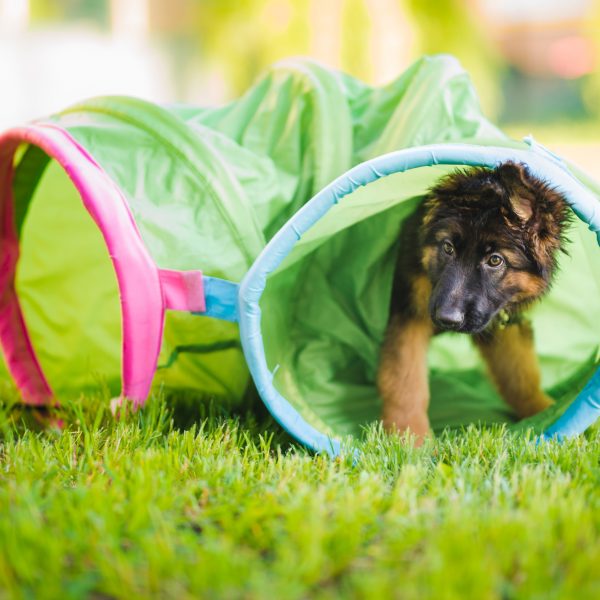How to Keep Your Dog Engaged During Training Sessions

Training is an essential part of adding a dog to your family. Not only does it help your puppy grow into a well-behaved dog, but it’s also a bonding experience for you and your dog. Additionally, it provides mental stimulation and helps keep your dog from getting bored. But, for them to pick on training, they have to pay attention and even the most attentive dogs can get distracted. Here’s how to keep your dog engaged during training sessions:
1. Get in Some Exercise Before the Training Session
One of the signs your dog isn’t getting enough exercise is them being overactive. This often results in excited jumping, lack of focus, destructive behavior, and more. This can also mean a distracted dog that isn’t paying attention or listening during training.
One of the ways to keep your dog more engaged during a training session is to make sure they’re getting enough exercise. This is particularly important for high-energy dog breeds. Getting some exercise in to burn off excess energy before the training session can help them focus during it.
2. Figure Out the Right Rewards
Keeping training consistent and focused on praise and positive reward are important dog training tips. But, when it comes to rewards, they need to be something that your dog cares about.
Some dogs will be more than excited for a piece of kibble or a standard treat while others may need something else. It may not be the best approach to use food as a reward for some dogs. In these cases, the right reward could be a favorite toy. It all depends on your dog and the dog training methods they respond to best.
3. Avoid Training After a Meal
Another reason a dog may not be engaged in a training session is because they just finished eating. Just as we can get sleepy after a meal, so can our dogs, and this can make them unfocused or uninterested in training.
This is particularly true is your rewards are food-based. Some dogs will eat themselves sick if you let them. Regardless, dogs who have just eaten a meal are more likely to be less interested in food rewards. This can cause them to disengage or lose motivation during training sessions.
If the training you’re doing requires movement and activity, it can be dangerous to jump in too soon after a meal, especially for dogs that are at a higher risk for bloat. In this case, it’s better to let your dog digest for a bit before jumping into intense training sessions.
4. Keep Training Sessions Short
Some dogs will be eager to train and are able to focus for longer periods of time while other dogs are easily distracted. You may need to test different session lengths to find the right fit for your dog.
If you find them getting distracted towards the end of a session or your dog doesn’t listen to you, there’s a chance it may be too long for them and they are getting bored. One of the tips to keep them more engaged and focused during training is to keep training sessions short and focused as well.
Instead of trying to knock everything out in one long session, break it up into smaller chunks and spread it out throughout the day. You and your dog will likely appreciate the break and it helps keep training sessions a more enjoyable experience for you both.
5. Start Training in Quiet, Distraction-Free Areas
Another way to help keep your dog more engaged during training sessions is to reduce distractions, especially when you are just starting out with something new.
If you intentionally start training in quiet areas that are as free of distractions as possible, your dog can stay focused on what you want them to learn and make the association more quickly.
As they catch on and respond consistently, you can then start introducing more noise and more distractions to help the training stick no matter what else is going on.
These are just a few tips to help keep your dog engaged during training sessions. With more engaged training sessions, you can communicate with your dog better, bond with them more, and even teach them new tricks!
